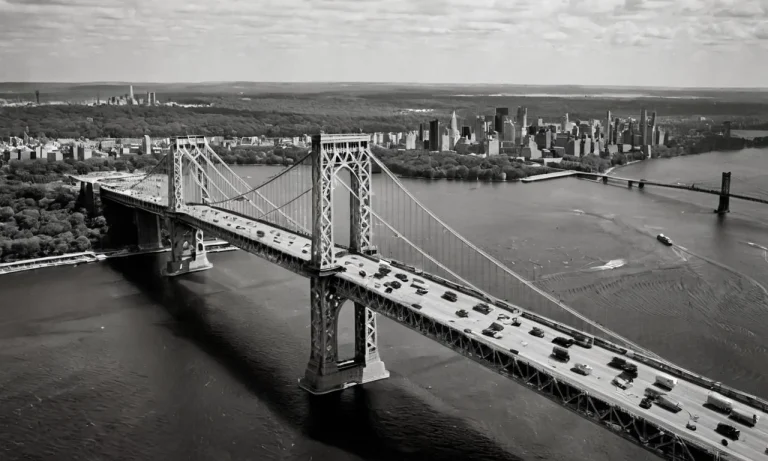When Will It Be Safe To Cruise Again?
The cruise industry has faced immense challenges over the past few years due to the COVID-19 pandemic. If you’re wondering when you can safely book your next cruise vacation, here’s a quick answer: Most experts predict it will be safe to cruise again in 2023 as long as health and safety protocols remain in place.
In this comprehensive guide, we will analyze the latest cruise industry trends and data to determine the factors that will allow cruises to resume normal operations. We will also provide expert predictions on timelines for when major cruise lines will be sailing regularly again.
Health and Safety Protocols on Cruise Ships
As the world navigates through the COVID-19 pandemic, the cruise industry has been working diligently to implement rigorous health and safety protocols to ensure the well-being of passengers and crew members.
These protocols aim to minimize the risk of spreading the virus and create a safe environment for everyone on board.
Enhanced Sanitation Efforts
Cruise lines have significantly enhanced their sanitation efforts to keep the ships clean and free from any potential contaminants. Increased frequency of cleaning and disinfecting high-touch areas such as handrails, elevators, and public spaces is now a standard practice.
Additionally, the use of hospital-grade disinfectants and advanced air filtration systems has been implemented to improve air quality on board.
According to the Centers for Disease Control and Prevention (CDC), cruise ships are required to maintain a comprehensive sanitation plan that includes regular cleaning of cabins, dining areas, and recreational facilities.
These measures are designed to provide passengers with peace of mind and ensure a safe cruising experience.
Vaccination Requirements
Many cruise lines have implemented vaccination requirements for both passengers and crew members. By requiring proof of vaccination, cruise lines aim to create a vaccinated population on board, which reduces the risk of COVID-19 transmission and contributes to the overall safety of the voyage.
Cruise lines have aligned their vaccination policies with the recommendations of health authorities such as the CDC and the World Health Organization (WHO). These policies may vary depending on the cruise line and the destination, so it is important for travelers to check the specific requirements before booking their cruise.
Pre-Cruise Testing
Another important health and safety measure implemented by cruise lines is pre-cruise testing. Passengers are often required to undergo COVID-19 testing before boarding the ship. This helps to identify any potential cases before they come on board and reduces the risk of an outbreak during the voyage.
Cruise lines may have specific testing protocols in place, including the type of test required (PCR or antigen) and the timeframe within which the test must be taken before the cruise. These requirements are aimed at ensuring that all passengers are COVID-free before embarking on their journey.
Onboard Masking Policies
While vaccination and testing requirements help minimize the risk of COVID-19 transmission, cruise lines also have onboard masking policies to provide an additional layer of protection. These policies may require passengers to wear masks in certain areas of the ship, such as indoor public spaces or crowded outdoor areas.
It’s important to note that onboard masking policies may vary depending on the cruise line and the destination’s regulations. Passengers should familiarize themselves with these policies before embarking to ensure compliance and a smooth sailing experience.
Cruise Capacity and Demand
As the world slowly recovers from the effects of the pandemic, the cruise industry is cautiously planning for a gradual resumption of service. Cruise lines are closely monitoring the situation and working with health authorities to ensure the safety of passengers and crew members.
One of the key factors in determining when it will be safe to cruise again is the capacity and demand for these voyages.
Gradual Resumption of Service
Given the unprecedented nature of the pandemic, cruise lines are taking a cautious approach to resuming their operations. They are implementing enhanced health and safety protocols, including increased sanitation measures, mandatory testing, and social distancing guidelines.
These measures are designed to protect the health and well-being of both passengers and crew members.
Before cruise lines can fully resume their operations, they must also consider the capacity of their ships. Due to social distancing requirements, ships may need to operate at reduced capacity to ensure a safe and comfortable experience for passengers.
This means that cruise lines will need to carefully plan their itineraries and adjust their schedules accordingly.
Pent-Up Travel Demand
While the cruise industry took a hit during the pandemic, there is a pent-up demand for travel. Many people have been longing for a vacation and are eagerly waiting for the opportunity to set sail again. This pent-up travel demand is expected to drive the recovery of the cruise industry.
According to a survey conducted by Travel Weekly, 78% of respondents said they would be willing to cruise again once it is safe to do so. This indicates a strong desire among travelers to return to cruising.
Cruise lines are closely monitoring this demand and are ready to meet the needs of their loyal customers.
It is important to note that the resumption of cruising will depend on various factors, including the progress of vaccination efforts, the decline in COVID-19 cases, and the guidance of health authorities.
Cruise lines are committed to ensuring the safety and well-being of their passengers and crew members, and will resume operations only when it is deemed safe to do so.
Cruise Line Recovery Plans and Timelines
Royal Caribbean
Royal Caribbean, one of the largest cruise lines in the world, has laid out an extensive plan for resuming operations. They have implemented new health and safety protocols to protect passengers and crew members.
These include enhanced cleaning procedures, mandatory COVID-19 testing, and social distancing measures onboard. Royal Caribbean aims to gradually restart its operations in a phased approach, with some ships already sailing in select destinations.
They are closely monitoring the situation and working closely with health authorities to ensure a safe and smooth return to cruising.
Carnival Cruise Line
Carnival Cruise Line, known for its fun and vibrant atmosphere, is also actively working on its recovery plan. They have developed a detailed framework that focuses on enhanced sanitation, testing, and medical capabilities.
Carnival is committed to a gradual and phased resumption of operations with a focus on providing a safe and enjoyable experience for their guests. They are closely collaborating with health experts and industry partners to implement the necessary protocols and ensure a smooth return to cruising.
Norwegian Cruise Line
Norwegian Cruise Line has been actively preparing for the resumption of cruising. They have implemented their “Sail Safe” program, which includes enhanced health and safety measures, such as rigorous cleaning protocols, onboard testing capabilities, and improved medical facilities.
Norwegian Cruise Line aims to gradually resume operations, focusing on implementing the necessary protocols and training their crew members. They are closely monitoring the global health situation and working in consultation with public health experts to ensure a safe return to cruising.
Princess Cruises
Princess Cruises, a popular choice for many travelers, has been diligently working on their recovery plan. They have implemented enhanced health and safety protocols, including extensive cleaning procedures, mandatory testing, and enhanced medical facilities onboard.
Princess Cruises aims to gradually resume operations, starting with a limited number of ships and itineraries. They are closely monitoring the situation and working in collaboration with global health authorities to ensure the health and well-being of their guests and crew members.
Disney Cruise Line
Disney Cruise Line, renowned for its family-friendly experiences, is also actively planning for the resumption of operations. They have developed a comprehensive set of health and safety measures, including enhanced cleaning procedures, mandatory testing, and physical distancing protocols.
Disney Cruise Line aims to gradually resume sailings, prioritizing the health and safety of their guests and crew members. They are closely monitoring the situation and working in consultation with public health experts to ensure a safe and magical return to cruising.
Key Factors for Cruise Industry Recovery
As the world begins to emerge from the grips of the COVID-19 pandemic, the cruise industry is eagerly anticipating a return to normalcy. However, several key factors will play a crucial role in determining when it will be safe to cruise again.
The Pandemic Outlook
The first and most important factor is the overall pandemic outlook. As vaccines continue to be distributed and infection rates decline, the likelihood of resuming cruise operations increases. Cruise lines are closely monitoring global health organizations and government guidelines to determine the safest time to resume operations.
It is important to note that each destination may have its own set of restrictions and requirements, further complicating the timeline for a full recovery.
According to the Centers for Disease Control and Prevention (CDC), cruise lines must meet certain criteria before they can resume sailing in the United States. These criteria include demonstrating the ability to mitigate the spread of COVID-19 on board, implementing testing and quarantine protocols, and establishing agreements with medical facilities at ports of call.
Meeting these requirements will be essential for the resumption of cruise operations.
Booking Trends
Another key factor for the recovery of the cruise industry is the booking trends of potential passengers. Cruise lines rely heavily on advance bookings to plan their itineraries and allocate resources.
Monitoring the booking trends will provide valuable insights into consumer confidence and willingness to travel again.
According to industry reports, there has been a surge in pent-up demand for cruises, with many people eager to set sail once it is safe to do so. Cruise lines have introduced flexible booking policies and enhanced health and safety measures to reassure potential passengers.
These measures include increased sanitization, mandatory testing, and reduced capacity to allow for social distancing. By catering to the concerns and needs of travelers, cruise lines hope to rebuild consumer trust and stimulate demand.
Itinerary Planning
The final factor that will impact the recovery of the cruise industry is itinerary planning. Cruise lines must carefully consider the destinations and ports of call they include in their itineraries. Some countries may have stricter entry requirements or may be hesitant to welcome cruise ships until the pandemic is more under control.
Cruise lines are collaborating with local authorities and tourism boards to ensure that their itineraries align with the current health and safety guidelines of each destination. Flexibility and adaptability will be key as cruise lines navigate the ever-changing landscape of travel restrictions and protocols.
Conclusion
The cruise industry has made tremendous progress towards resuming normal operations after facing immense adversity over the past few years. As long as health protocols remain robust and the pandemic outlook remains positive, experts are optimistic cruising will be safe again in 2023.
By monitoring critical factors like vaccination rates, cruise demand, and cruise line restart plans, we can make educated predictions on when you can comfortably set sail again.








